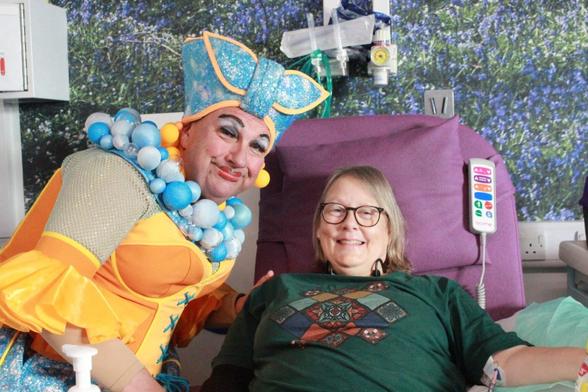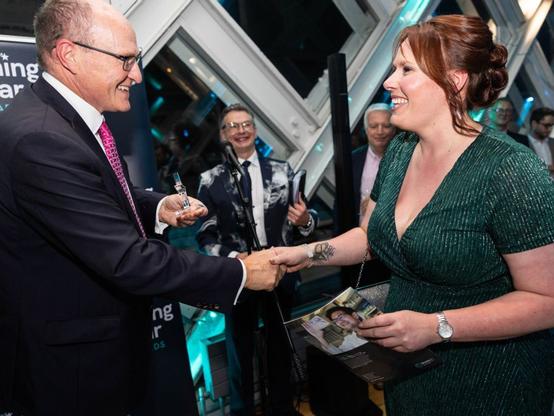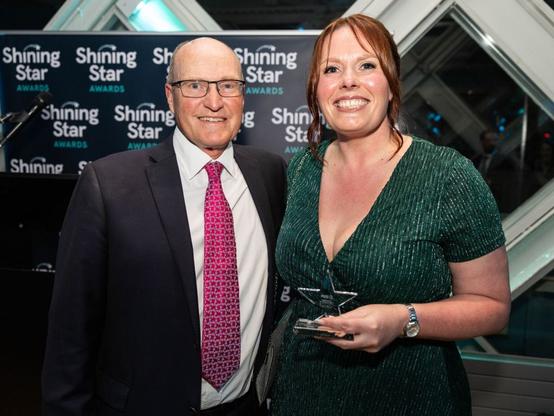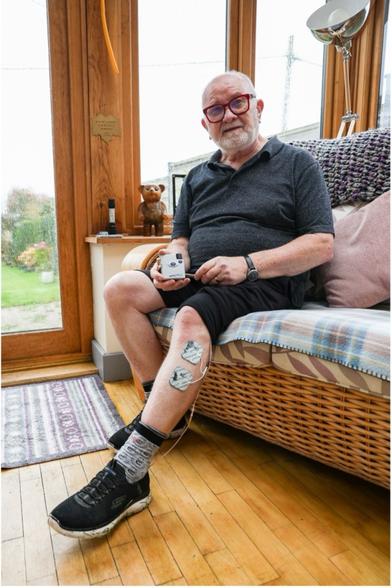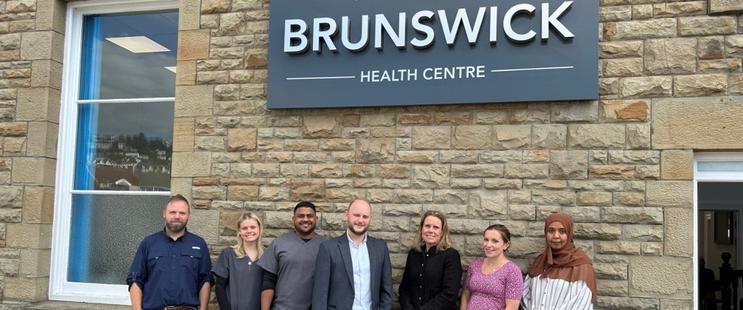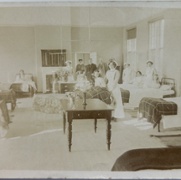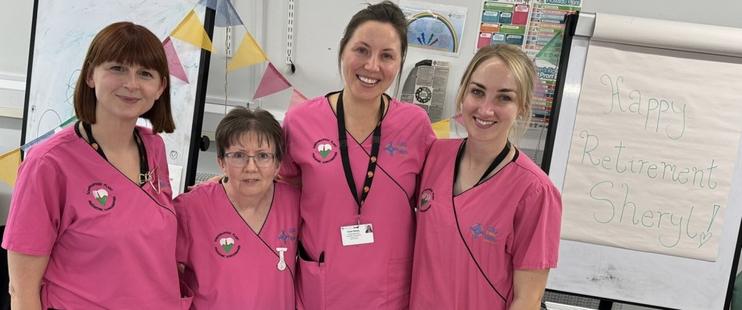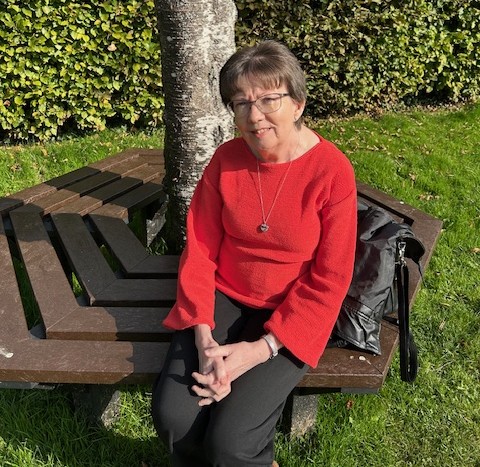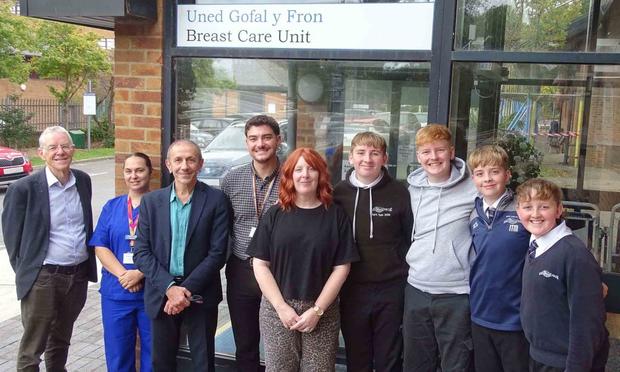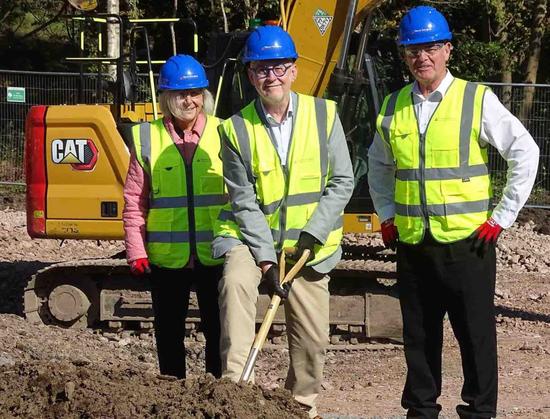Kev Johns brings smiles to Chemotherapy patients
The visit formed part of Kev’s promotional tour ahead of this year’s Swansea Grand Theatre pantomime, Aladdin, which runs from 6th December to 4th January, where he’ll take to the stage as the ever-fabulous Mona Manky. But beyond the bright costumes and big laughs, Kev’s visit carried a far deeper meaning.
As an ambassador for Swansea Bay Health Charity’s Going the Extra Mile for Cancer Appeal, Kev’s connection to Ward 9 is deeply personal. Having been diagnosed with stage 4 cancer four years ago, he has undergone 42 treatments and continues to receive monthly immunotherapy at Singleton Hospital. Now thriving and full of gratitude, he remains passionate about supporting those on their own cancer journeys – and the incredible staff who care for them.
“I just like to say thank you,” said Kev.
“If I can bring a bit of cheer to the faces of the staff who work incredibly hard on Ward 9 – to whom I am indebted for the care, treatment, and support they give me – then I’m happy. I love them to bits. They are the most incredible people, from Mary at reception to all the staff in various rooms”.
Kev’s visit was filled with touching moments. One patient called Peter, joined by his wife, became emotional after a difficult few weeks, later sharing that the surprise visit had brightened their day. Another special moment came when Heather Pickford, who had just completed her treatment for breast cancer, rang the milestone bell alongside Kev to celebrate her final chemotherapy session.
Reflecting on the day, Kev said:
“I know exactly what patients are going through. I’ve sat in those chairs myself through various stages of my own cancer journey.”
“I am very aware of what is going on, so if I saw somebody who I thought maybe it’s not a good day to do this today, then I wouldn’t. I’m very much guided by the staff. This is my way of supporting an incredible part of the Swansea Bay University Health Board and the charity which I have great affection for and great gratitude for”.
As someone who has turned his personal battle into a message of hope, Kev continues to use his platform to raise awareness and encourage fundraising for the Going the Extra Mile for Cancer Appeal – a campaign that helps improve facilities, comfort, and support for cancer patients across Swansea Bay.
“I had a message from one fella who said ‘you went to see my mother today and you put a much-needed smile on her face,’ so that made me think that maybe what we’re doing is a good thing,” Kev added.
Kev’s visit was a reminder that kindness, humour and hope can go a long way in lifting spirits – especially in places where courage is found every day.
If you’d like to see Kev’s Mona Manky performance in Aladdin at Swansea Grand Theatre from 6th December, tickets are available here.
[Lead image: Swansea Bay University Health Board]
